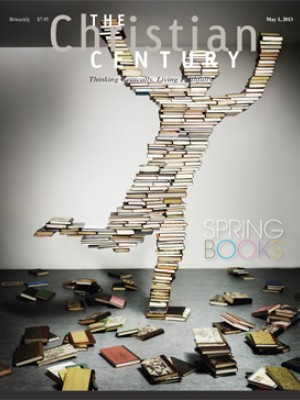Sunday, May 12, 2013: Revelation 22:12-14, 16-17, 20-21; John 17:20-26
Barbara Kingsolver explores the dystopic effects of climate change in Flight Behavior, a novel about a family and community struggling through the rainiest winter in memory. Sheep farmer Dellarobia Turnbow lives on a wooded hill that unexpectedly becomes the winter hibernation grounds for millions of monarch butterflies when weather chaos disrupts the species’ normal migration pattern.
Scientist Ovid Byron arrives to study the phenomenon and sees a dire future for the species: “I am a doctor of natural systems,” he says. “And this looks terminal to me.”
At first Dellarobia disagrees and is fascinated by the beauty of the scene. “I just can’t see it being all that bad,” she says. But by the end of the novel Dellarobia understands the science of climate change and realizes that the presence of butterflies on her hill means that she is in effect living on a different planet.
Read our latest issue or browse back issues.
John of Patmos’s project in the book of Revelation is similar to Ovid Byron’s work: both help people see that it is, in fact, “all that bad.” John too is a “doctor of natural systems.” He diagnoses the entire Roman imperial system as monstrous, even Satanic, as it devours peoples and the whole of creation with its predatory economy. Yet unlike Byron, John has a twofold project as a doctor: he diagnoses the situation as terminal, and then he gives people the medicine—a vision of hope.
That hope comes in Revelation 22 through the liturgical invitation. “Let everyone who is thirsty come.” John has led us through 20 chapters of dire diagnosis. His mission has been to help communities of Jesus’ followers see the inevitable end that lies ahead and then to give them the courage to “come out” of empire before it is too late (Rev. 18:4). John leads his communities on an exodus journey into the Lamb’s vision of hope and gives the invitation to come into the holy city: “Blessed are those who wash their robes, so that they will have the right to the tree of life and may enter the city by the gates.”
No vision is more urgently needed. The preacher’s task is to help people embrace that tree of life whose leaves are medicine for our world. Doctor John of Patmos helped people find that medicine 2,000 years ago. Scientists like Ovid Byron—the doctors of natural systems—call us to take the medicine today. Dellarobia tells Byron that “people can only see things they already recognize.” Preachers help us to recognize things—both the dire predicament and the way ahead. The medicine we need is the Bible’s tree of life, as well as those glimpses of that tree of life that are dawning already in our own holy cities.
For the first-century community, Revelation’s proclamation of the impending end referred not so much to the end of the world (kosmos) as the end of the whole toxic system of Roman rule (oikoumenē). Against Rome’s own eschatological claims that it would rule forever, Revelation proclaimed that the end would take place soon (Rev. 1:1), thus offering comfort and assurance to God’s saints who cried out, “How long, O Lord?” (Rev. 6:10).
Revelation ends as it began, pronouncing as “blessed” (makarios) those who hear and keep what is written. The tree of life and the New Jerusalem had been promised in the opening letters to Ephesus and Philadelphia (Rev. 2:7, 3:12). Now the beatitude of Revelation 22:14 confirms those promises.
Revelation 22 invites us to drink deeply from its metaphors of promise and warning, vision and blessing. With its diagnosis of the pathology of empire, it can help us frame dire issues such as climate change.
Revelation’s apocalyptic journey concludes with a liturgical dialogue. The antiphonal “Come” is a eucharistic liturgy in which the Spirit and the bridal New Jerusalem invite everyone who thirsts to “take the water of life.” Drinking and eating at the eucharistic table give us a glimpse of God’s future holy city and a taste of its life-giving water. It is a mystical invitation.
Likewise, John 17 is a mystical chapter. While the eschatology of Revelation could not be more different from the eschatology of the Gospel of John, both passages share a deep sense of vision. Both believe that the mystical encounter with God’s sacramental presence can heal us.
The prayer of John 17 gives us a window into the heart of God. “In-ness” and “one-ness” flow back and forth in this prayer, perhaps playing on the similarity of the two words in Greek (en and hen). In the mystical geography of God’s love, we are now “in” Jesus and he is in us, just as he and the Father are in one another. Love is at the heart of this prayer and at the heart of Revelation. Out of love, God gives the water of life dō rean (“without cost”) to everyone who thirsts. Out of love, God gives the tree of life with its leaves for healing.






